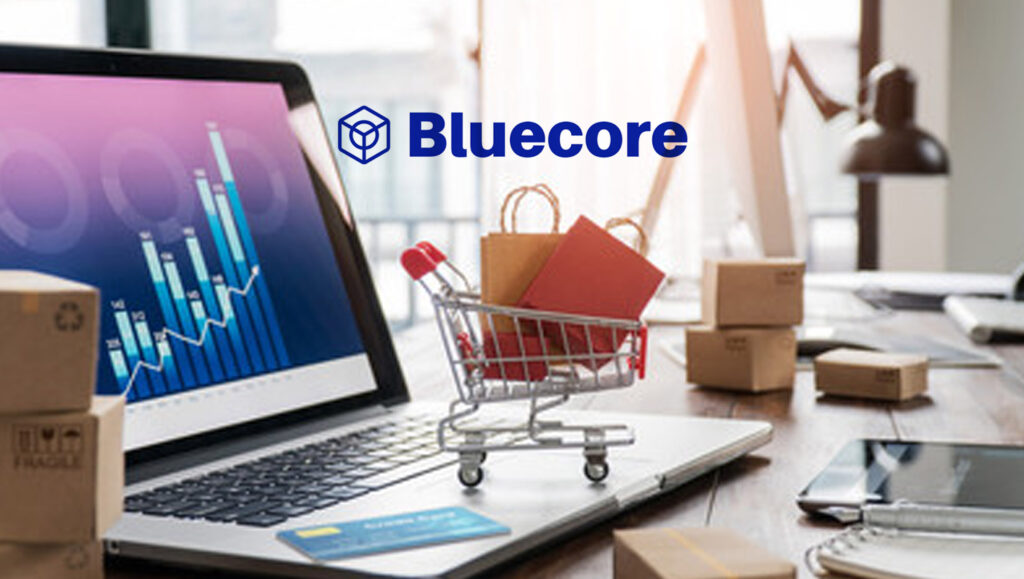Better Use of Customer Data Increases Conversions from Retained and Loyal Customers Through Black Friday and Beyond
Bluecore, a retail shopper identification and customer movement technology, announced findings from Black Friday in its annual insights report, which shows that large enterprise retailers fared much better than their mid-market counterparts, and they did it with data.
Large retailers increased their identification rates 12% year-over-year (YoY) this Black Friday compared to a decrease of 4% identification for mid-market retailers. First time purchasers made up only 38% of the total for large retailers versus 58% for mid-market retailers. Having higher identification rates and a higher percentage of purchasers being retained customers drove success for the large enterprises – they had more customer insights with which to capitalize on moments of intent and move shoppers through the purchase funnel.
“Black Friday has become Black November, with discounting starting much earlier in the holiday season. This changes the way consumers research and purchase, giving data-driven retailers a significant advantage. With intense competition in a relatively flat economic environment, it is critical that retailers focus on identification, capturing insights to capitalize on moments of intent, and activating customer data to drive customer movement,” said Jason Grunberg, CMO at Bluecore.
Read More: Laxis Secures $1.5 Million in Seed Funding to Empower Revenue Teams with AI
Consumers Show Signs of Increased Purchase Consideration
Total site traffic was down slightly (-1.51%) and order volume up (+17.61%) on Black Friday YoY across many major retail categories, including apparel, footwear, and health & beauty. Health & beauty was the only category to deliver increased performance in both site traffic and order volume; however, when viewing this category through median data reporting it is down across both demonstrating that industry leaders captured significant market share in the category this Black Friday.
Overall average order value (AOV) decreased by 2.38%, driven in large part by toys and gifts (-13.29%), sporting goods and outdoor (-5.58%) and apparel (-3.31%). The decrease is likely driven by higher-than-previous-year discounts designed to capture consumer attention and move inventory.
Consumers viewed a larger number of products in 2023 with the greatest increases occurring in apparel (+20.6%) and luxury and jewelry (+16.9%). On average, shoppers across all retail categories viewed 12 unique products, but viewed many products multiple times, for a total product view number per shopper of 23, demonstrating a high level of consideration for any purchase. With this year’s holiday campaigns starting at the end of August, retailers run the risk of further increasing purchase consideration as consumers hold out for discounts.
Read More: SalesTechStar Interview with Michael Walton, VP Product, Sales Hub, HubSpot
Customer Identification and Movement Became Critical to Hitting Year-Over-Year Comps
Bluecore looks at the critical metrics that drive true growth for retailers including identification, the percentage of website visitors who can be identified by an attribute, such as an email or phone number, and customer movement, how consumers move from unknown shoppers to known customers to repeat loyalists. While conversions represent realized revenue, identification and customer movement have emerged as metrics that indicate the ability to acquire incremental reach and drive future revenue:
Identification: Identification rate for large enterprises increased 12% versus a decrease of 4% for mid-market brands on Black Friday alone. This means that on this critical day, large enterprises had the data needed to know a greater share of who is shopping their site and use this awareness to personalize the experience more effectively than their mid-market competitors and contemporaries.
Customer Movement: Large enterprises had a much better repeat purchase rate of 62% of sales coming from previous buyers compared to only 42% for mid-market retailers. While the percentage of repeat buyers is up for both large and mid-market year-over-year, Bluecore’s qualitative analysis found large retailers deploying specific strategies to target previous customers versus new shoppers, explaining why industry leaders are so far ahead. Their focus on customer movement drove 35% of customers who have previously purchased at least four times from large retailers to purchase on Black Friday, versus just 20% of the same segment from mid-market.
“Retailers that focus on identification, and not just promotion, will set themselves up for significant incremental lift going into 2024. Identification rates for Bluecore’s customer base overall is up 40% year over year, creating a solid foundation for customer movement during the holiday season. We found that large enterprises did a better job at bringing back previously identified shoppers and customers, providing a more personalized experience to drive conversion both in the moments these consumers were onsite as well as in being able to retarget through a variety of channels to revive abandoned browsing, searching, and carting. The good news is that mid-market retailers can take the same approach and fare much better at capitalizing on those moments of intent in 2024,” said Fayez Mohamood, CEO at Bluecore.





















